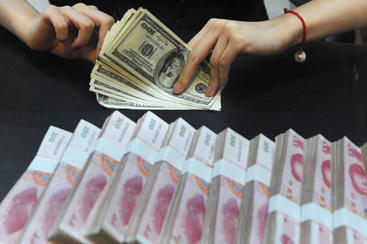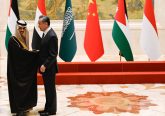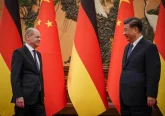
Accession to the World Trade Organization (WTO) on 11 December 2001 was a watershed for China’s international economic relations. Joining the WTO meant that, after two decades of gradually opening its economy and markets, China formally accepted both the benefits and obligations of membership in a multilaterally negotiated rules-based regime governing international trade. The long march towards WTO accession – its pitfalls and challenges as well as the impressive surge in China’s import and export figures thereafter – have been well documented.
But, somewhat in the shadows of these remarkable achievements in the field of multilateral trade policy, foreign investment has emerged as another important component of China’s international economic relations. China has long been one of the leading recipients of foreign direct investment (FDI) in the world, attracting multinational enterprises as a low-cost location for outsourcing and a potentially enormous market of 1.3 billion consumers. More recently, Chinese companies themselves have expanded abroad at breakneck speed, and China has become a significant source of FDI in other countries. Moreover, in an era where global supply chains rely on the efficient interplay between trade and FDI, the latter cannot be ignored in international economic policy considerations, especially not by a country occupying a key position in global supply chains such as China. Economic trends of such significance and magnitude thus highlight the need for the Chinese government to be involved in international investment policies addressing issues such as investment protection, promotion and liberalisation. Yet, with the exception of some specific trade-related aspects of investment, the WTO system is insufficiently addressing these issues.
It is because of this lack of multilateral coordination that international rules governing foreign investment have been established through a myriad of international investment agreements (IIAs) negotiated and concluded either as bilateral investment treaties (BITs) between two countries, or through multilateral negotiations. The main purpose of an IIA is to offer foreign investors and their investments protection under international law when they encounter problems in foreign jurisdictions, such as expropriation, discrimination, unfair treatment, losses resulting from conflict, war and strife, or limitations in the cross-border transfer of investment-related funds. More state-of-the-art IIAs also include provisions that liberalise and promote foreign investment. A common feature of IIAs is a provision allowing investors to sue governments through international arbitration should they be affected by an alleged breach of an IIA. Many developing countries conclude IIAs in the hope of attracting a larger number of investments.
China has emerged as a major player in this system of IIAs. Since the early 1980s, China has opened its economy to FDI by gradually expanding the geographic terrain on which foreign multinationals were permitted to conduct business and build factories, and China’s policymakers have accompanied this trend with the negotiation of BITs. Since concluding its first BIT with Sweden in March 1982, China has been among the most active negotiators of BITs in the world. By 2012, China had concluded some 130 BITs, ranking it second in the world after Germany.
During the first two decades of economic reform, when foreign investment provided key support for China’s economic development, the conclusion of BITs was primarily aimed at attracting foreign companies by offering investment protection under such treaties. However, the Chinese approach to negotiating BITs remained cautious for quite some time, as typical provisions found in most BITs, in particular national treatment and investor-state dispute settlement, did not find their way into many of the early Chinese treaties. Omitting or limiting these core provisions enabled the Chinese government to continue legislating in favour of Chinese state-owned enterprises and avoided recourse to international arbitration by foreign investors. In parallel with continuing efforts to open the Chinese economy, these restrictions on investment protection were gradually lifted, and by the time China entered the WTO, any newly negotiated BITs by and large resembled the format used by a broad number of countries in the world.
Since China’s WTO entry, the global system of IIAs has further evolved, and so has China’s investment treaty programme. Most importantly, China is following the global trend by accelerating the conclusion of “preferential trade and investment agreements”, such as free trade agreements (FTAs) with a chapter on investment incorporated in the treaty text. These treaties are also more elaborate in scope and content. Notable examples of China’s newer treaties are the Framework Agreement on Comprehensive Economic Cooperation with ASEAN, the trilateral investment agreement with Japan and South Korea and the recently concluded Foreign Investment Promotion and Protection Agreement with Canada. A unique case is the Cross-Strait Bilateral Investment Promotion and Protection Agreement between mainland China and Taiwan, established in the context of improving relations between these two economies since 2008.
With its increasing global economic significance, China has become an important treaty partner for many countries. At the same time, it has recently been argued that China’s objectives in concluding IIAs should be shifting from attracting foreign investors into China to protecting the interests of Chinese companies intensifying their own global investment activities. In 2012, Chinese outward FDI flows increased by 28.6 per cent to reach a record US$ 77.2 billion, while inward FDI in China contracted by 3.7 per cent to US$ 111.7 billion. Chinese companies have even started to make use of the dispute settlement mechanisms in cases against Peru, Mongolia and Belgium, while the Chinese government itself still appears to be spared from involvement in investor-state disputes (one dispute with a Malaysian investor in 2011 was suspended).
With the Doha Round of trade negotiations stalling at the WTO for more than ten years now, the sustainability of the multilateral trading regime is being questioned as countries resort increasingly to bilateral or regional FTAs (with investment chapters) for the advancement of their economic interests. This shift in global trade policy places China in the middle of a rivalry among competing potential trading blocks, including the Trans-Pacific Partnership Agreement that is currently being negotiated without China, the anticipated Transatlantic Trade and Investment Partnership between the United States and the European Union (EU), the proposed Comprehensive Economic Partnership for East Asia that includes China, and even a potential China-EU investment treaty. China as an emerging power and counterweight to the United States will find it difficult to identify its appropriate place in this newly evolving system of trade and investment agreements. But despite uncertainties, there is little doubt that in the current times when China is also considering further liberalisation of its capital account, IIAs will continue to play an important role in China’s economic diplomacy in the years to come.
Jan Knoerich is Departmental Lecturer in the Economy of China at the University of Oxford. His current research focuses on Chinese foreign direct investment. He has previously worked on international investment and development issues for the United Nations Conference on Trade and Development (UNCTAD).








1 Comment
Dear Mr. Jan Knoerich,
You have an excellent peace here dealing with new tendency in international arena, namely, speedy expansion of the China FDIs all over the globe. You also rightly indicated that first attempts to curb this expansion are being made, namely, starting negotiations on Transatlantic trade and investment partneship, Thans-Pacific partnership agreement and EU-Japan free trade zone.
In 2013 I published a book in Moscow publishing house “International relations” with a title “Chinazation: China economic growth implications for the world in 21-st century” where I touch upon these topic too.
The Belarus university Center for International Studies prepared a Draft Project on comparative study on the Chinese involvement in EU and in Russia, Belarus and Central Asian states. We planed to conduct the study togerther with Tallinn University but they did not confirm their interest. If such study could be of interest to you and your collegues I would gladly send this Draft Project to you.
Thanks again for the fine post you have written.
With best regards,
Professor Aleksandr Baichorov
Belarus State University
Department of International Relations